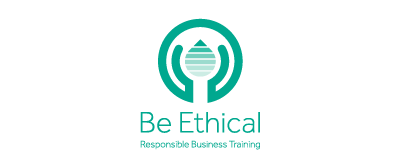How to write realistic Sustainability targets
4min read
Keep your targets SMART
Specific – narrow them down to one sentence; what you want to achieve and how.
For example – (environmental target) “What: Reduce our C02 emissions by 30% by (date) How: by launching a green travel plan across the business.”
Measurable – Define what evidence will prove you’re making progress:
For example (Social target) – “Offer 10 apprenticeships each year, with a commitment to employing 3 members of staff.”
Achievable – Make sure you can realistically achieve your target in the given time frame with the resources you have. The best way to do this is to understand your current position. For example, ‘Reduce our C02 emissions by 30%’. Where did we get this 30%? Start with defining your existing carbon footprint when it comes to transport. Ask yourself:
- How many of your staff travel by single-use car (survey)?
- What mileage expenses are put through each month?
- What is the policy on international travel or client/project delivery?
Once you have this data and context, you will better understand what’s possible and feel more confident in providing figures.
Relevant – Align them to your company values and the local needs of your communities. For example, what behaviours as a business do you have that will support the delivery of these objectives, and how will they be helpful in your local communities? You don’t always have to put this detail in the Policy itself. Still, it is worth having this to hand (usually in a Strategy document) to support your broader messaging, making the targets more relatable to the business, its employees and the communities it serves.
Time-bound – Set a realistic end date for the target for task priority and motivation. Usually, a year to 18 months is sufficient. Never underestimate the time it takes to research, develop and deliver your targets! Organisations can also involve stakeholders on the journey by transparently reporting progress – successes and challenges – at regular intervals. Don’t just complete a ‘data dump’ at the end of the year in a 40-page report (this lacks transparency in achieving the end goal/target).
NOTE: Also consider if your targets are appropriate for the next decade. For example, if you focus on a select renewable energy source, will it be sustainable in 10 years? Try and consider the long-term impact of your targets too.
Align them to the UN SDGs
Once your targets are aligned with your values (behaviours) and local needs, we suggest you take a step back and review the bigger picture.
How do these targets now relate to real global goals?
Aligning your commitments and plans with the United Nations Sustainable Development Goals (UN SDGs) will help your business to showcase its understanding of global issues and its ability to strive towards them. It will also connect your brand with a global campaign, mainstreaming your messaging and impact.
Be transparent!
What if we don’t hit these targets? Will it be seen as greenwashing?
If you have done your research and based your targets on your current position and the resources available to you at the time, then the intention to achieve them is authentic.
If something unforeseeable (like a global pandemic or war) happens, explain how that has impacted your targets and how you have adapted your actions to continue to strive towards them.
Don’t hide anything, and don’t try to cover it up with something else.
Transparency is key to building trust and loyalty.
LET’S REVIEW YOUR TARGETS in a free consultation call!
BOOK NOW

